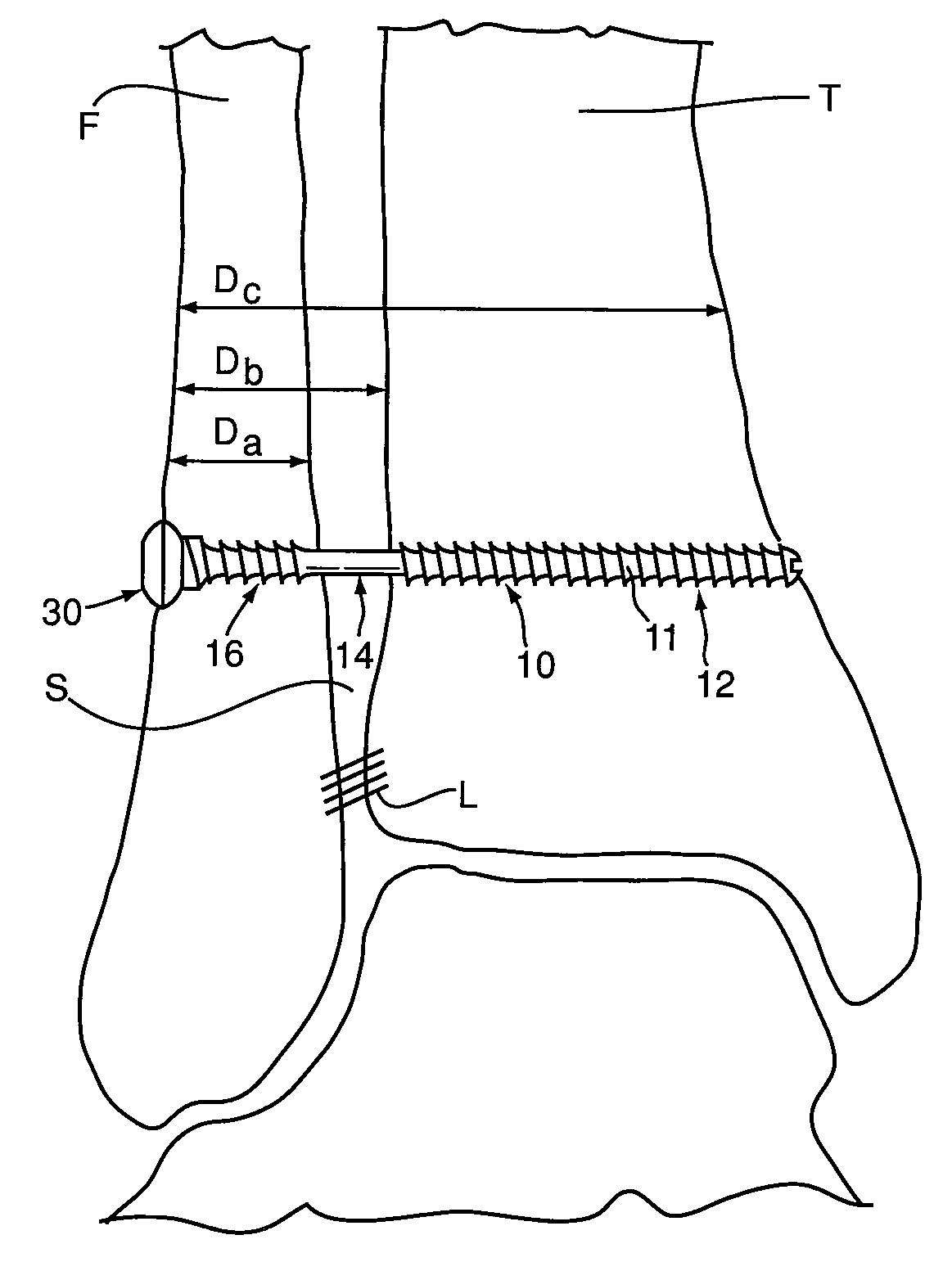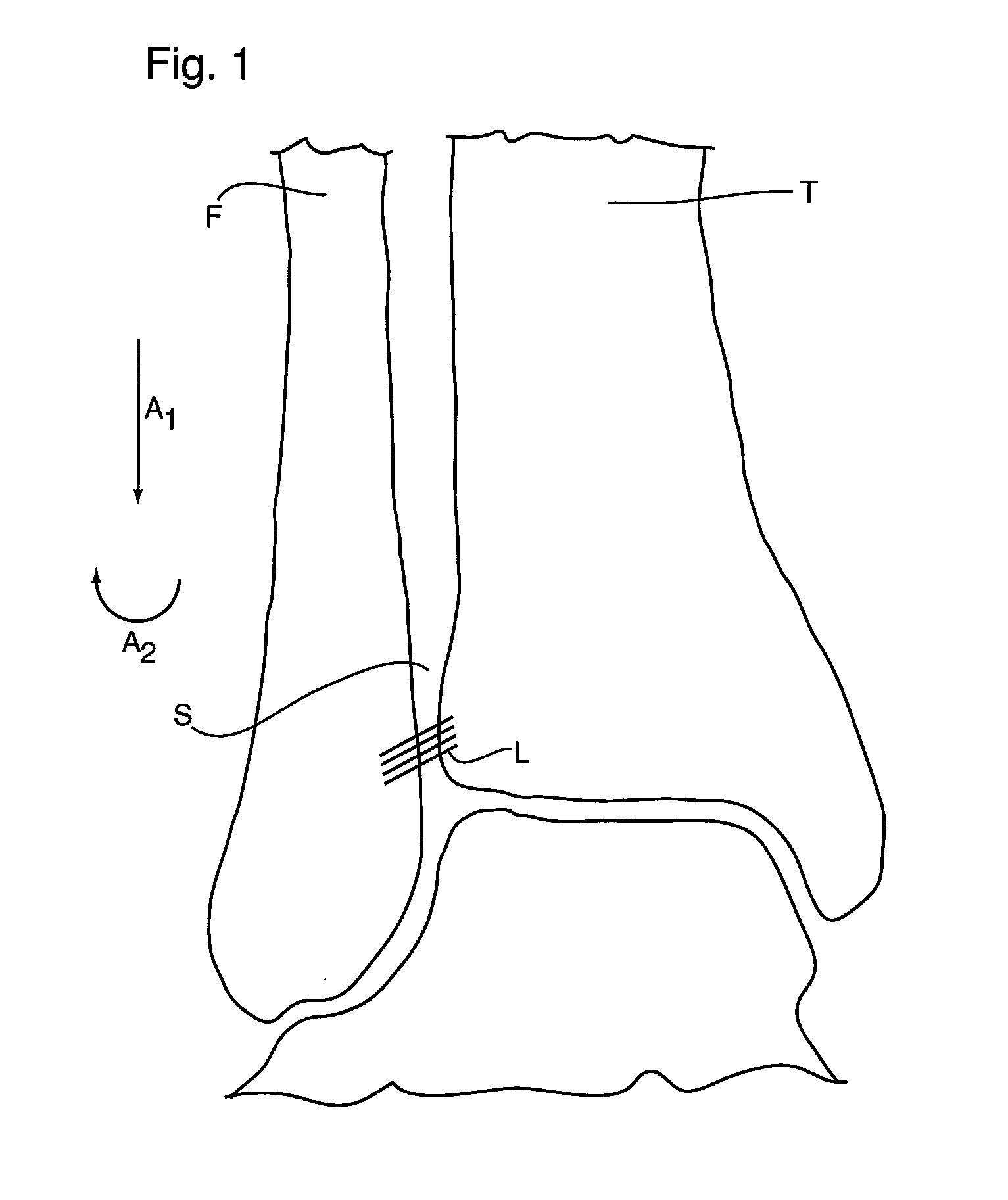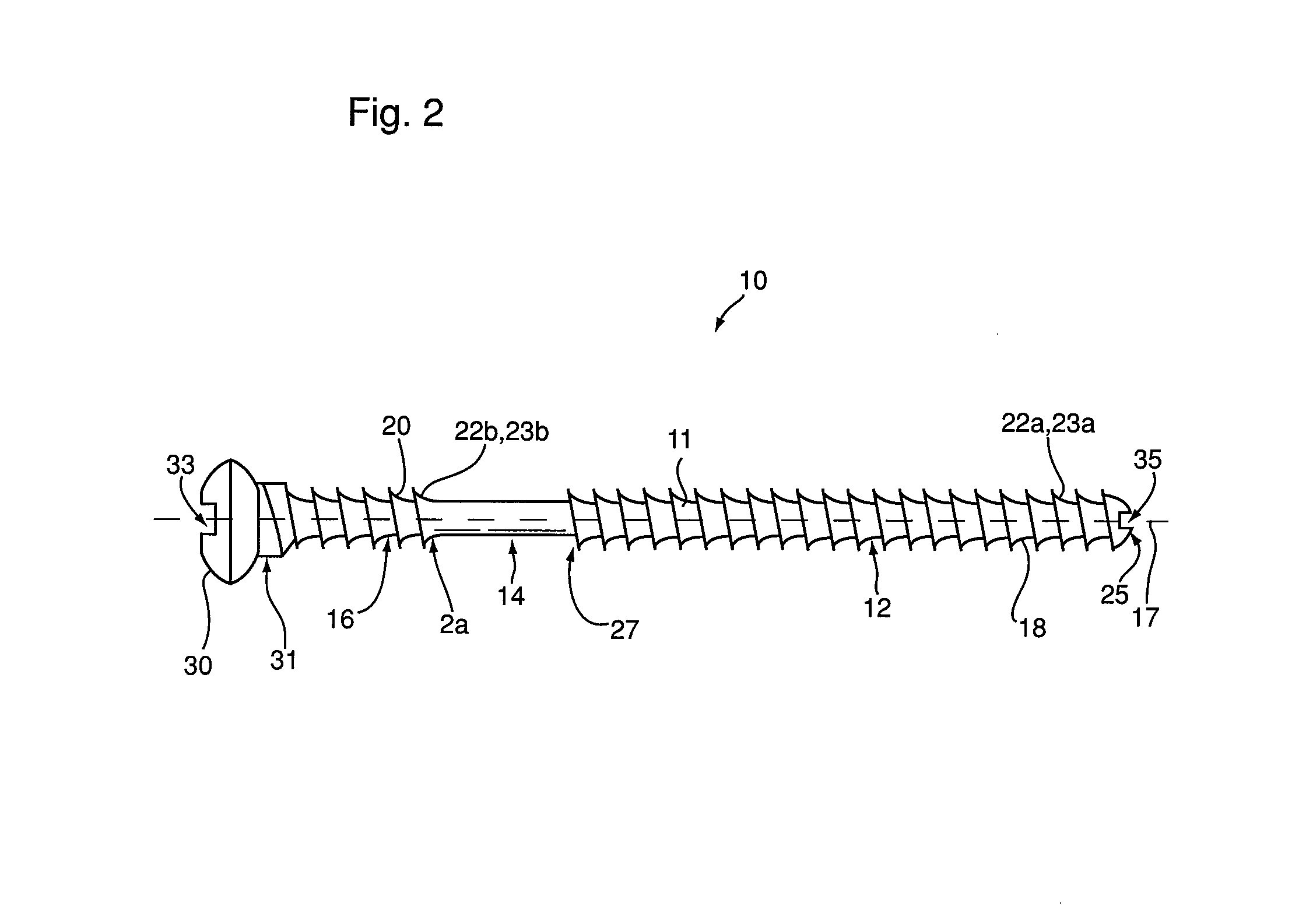Bone fixation device and method of use thereof
a bone fixation device and bone technology, applied in the field of bone fixation devices and methods, can solve the problems of increased diastasis and instability, and more serious cases may require surgery
- Summary
- Abstract
- Description
- Claims
- Application Information
AI Technical Summary
Benefits of technology
Problems solved by technology
Method used
Image
Examples
Embodiment Construction
[0037]Referring to FIG. 2, an embodiment of a bone fixation device 10 of the present invention is shown. Bone fixation device 10 is a connector comprising a unitary body 11, and is configured to repair injuries, such as ankle syndesmosis injuries, by flexibly connecting two bones, such as the tibia and the fibula. Bone fixation device 10 has a longitudinally extending axis 17, and comprises a first portion 12, a central portion 14, and a second portion 16. Central portion 14 extends along axis 17 between first portion 12 and second portion 16. Bone fixation device 10 is configured such that in use, first portion 12 is secured to a first bone, second portion 16 is secured to a second bone, and at least a portion of central portion 14 extends between the bones.
[0038]In order to secure each of first portion 12 and second portion 16 to first and second bones, each of first portion 12 and second portion 16 preferably have an outer surface 18, 20 comprising at least one bone engagement me...
PUM
 Login to View More
Login to View More Abstract
Description
Claims
Application Information
 Login to View More
Login to View More - R&D
- Intellectual Property
- Life Sciences
- Materials
- Tech Scout
- Unparalleled Data Quality
- Higher Quality Content
- 60% Fewer Hallucinations
Browse by: Latest US Patents, China's latest patents, Technical Efficacy Thesaurus, Application Domain, Technology Topic, Popular Technical Reports.
© 2025 PatSnap. All rights reserved.Legal|Privacy policy|Modern Slavery Act Transparency Statement|Sitemap|About US| Contact US: help@patsnap.com



